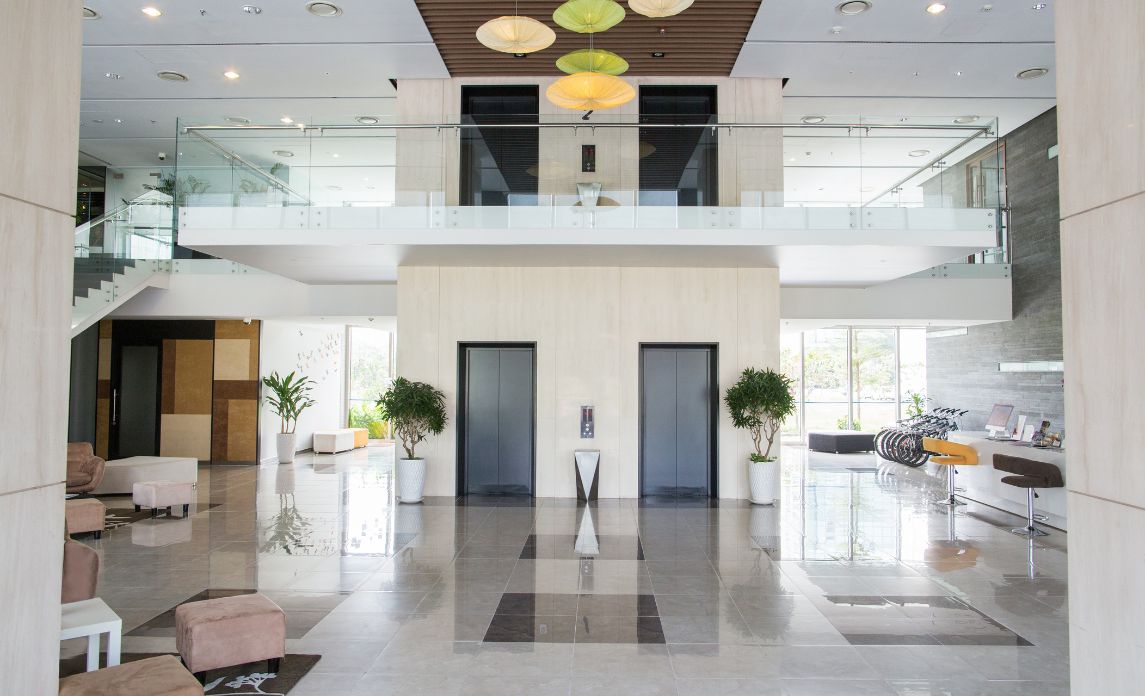Maintaining the cleanliness and hygiene of high-security buildings presents a unique set of challenges. These structures—whether government facilities, corporate headquarters, or research institutions—demand the utmost in security and privacy while also requiring meticulous cleaning and maintenance.
In this article, we delve into the protocols and practices necessary for commercial cleaning in high-security environments.
Rigorous Personnel Screening and Training
The foundation of cleaning in high-security buildings lies in the recruitment and training of cleaning personnel. This process can include extensive background checks, reference verifications, and security clearances, among others. Only individuals with a pristine record should be considered for these positions.
To simplify the recruitment process, it’s ideal to work with professional office cleaners. These companies, like Crewcare, ensure that their people are properly vetted and receive all the necessary training in order to provide excellent services.
Once selected, these employees need to undergo further comprehensive training on security protocols, confidentiality agreements, and the specific requirements of the building.
Access Control and Limited Entry
Controlling access is paramount in high-security buildings. Simply put, cleaning staff should be granted access to authorised areas only. Set-up electronic key cards, biometric scans, or other access control systems to ensure that only approved personnel can enter the premises and restricted areas. Doing this minimises the risk of unauthorised individuals gaining access to confidential information and .
Supervision and Monitoring
To maintain a high level of security, cleaning activities, no matter who is conducting them, should be supervised closely. The building or company management can designate security liaisons or dedicated supervisors to oversee cleaning personnel, ensuring that they adhere to security protocols and schedules. Surveillance cameras may also be employed to monitor cleaning staff's activities in real time.
Strict Cleaning Schedules
One of the key elements of cleaning high-security buildings is the strict adherence to cleaning schedules. The times need to be carefully coordinated with the shifts of security personnel to minimise disruptions. It may also be a good idea to clean during the “quiet hours”. Through after-hours cleaning, building managers can further reduce any interference with security operations.
Specialised Equipment and Tools
Cleaning staff in high-security buildings should be equipped with specialised tools and equipment tailored to the unique requirements of the environment. Moreover, cleaning products must be approved for use within these sensitive areas to prevent chemical interference with security systems or materials.
Waste Management
Secure disposal of waste, particularly sensitive documents and materials, is a critical component of cleaning in high-security buildings. At the minimum, shredders and secure waste containers should be utilised to safeguard against unauthorised access to discarded information.
Communication and Emergency Protocols
To maintain security and privacy, it’s essential to establish secure communication channels between cleaning staff, security personnel, and management. Moreover, cleaning personnel should be trained in response procedures in case of emergencies. In particular, develop lockdown or evacuation protocols to ensure that the staff can act swiftly and appropriately in critical situations.
Confidentiality Agreements
Before starting any cleaning procedures, all staff should sign confidentiality agreements that legally bind them to protect sensitive information encountered during their work. Any violation of these agreements can result in severe consequences.
Conduct Inspections and Audits
There should be regular inspections and audits of both the cleaning staff and the premises to ensure compliance with both security and cleaning protocols. These checks help identify any issues or areas that require improvement.
Provide Supervisory Access
For security purposes, there should always be persons of authority with whom cleaning personnel can communicate in case of an emergency or security issue. Assign a supervisor or manager from within the company as a kind of liaison officer, who will coordinate with the cleaning staff when necessary. This coordination between cleaning supervisors and security teams is essential for a swift and effective response.
Access Records
It’s critical to maintain detailed records of when and where cleaning staff are working. This not only ensures accountability but also assists in tracking any anomalies or irregularities. Develop an incident reporting protocol as well, so that every issue can be handled through proper channels.
Security Drills
Periodic security drills should include cleaning staff to test their response to security incidents. These drills help prepare all personnel for potential emergencies and reinforce the importance of security procedures before, during, and after cleaning.
Continual Training
Because of technology and other extenuating factors, security threats are always evolving. Thus, protocols must also change. Regular training is essential to keep cleaning staff up-to-date with the latest security requirements and practices. Moreover, it reinforces the importance of security within the cleaning process.
In conclusion, cleaning in high-security buildings is a complex undertaking that necessitates a delicate balance between maintaining security and hygiene. The strict protocols outlined here, from personnel screening and training to specialised equipment, waste management, and emergency procedures, are vital for ensuring that cleanliness doesn't compromise security. The collaboration between building management, security personnel, and cleaning staff is an important key to achieving this delicate balance and safeguarding the integrity of high-security facilities.


